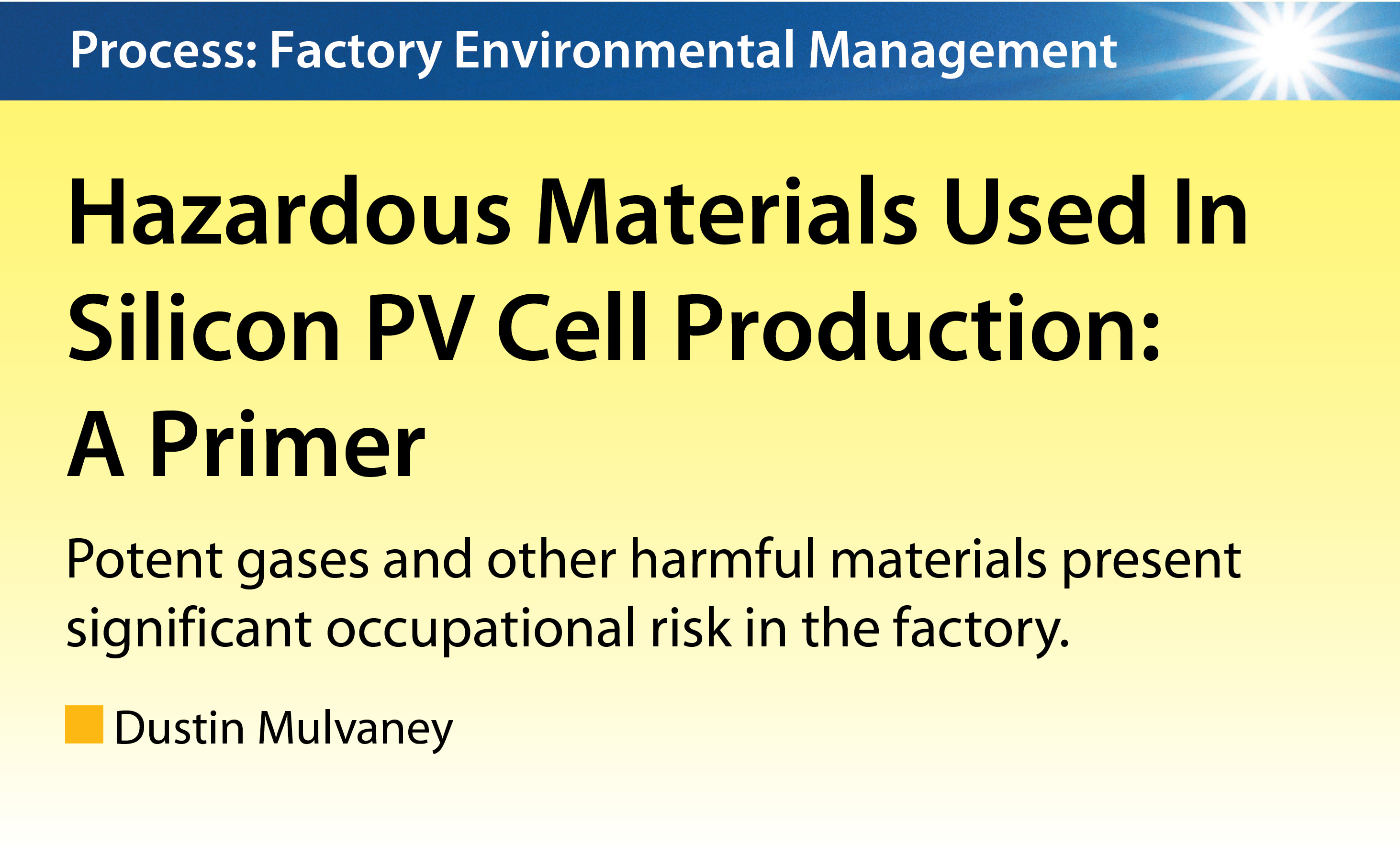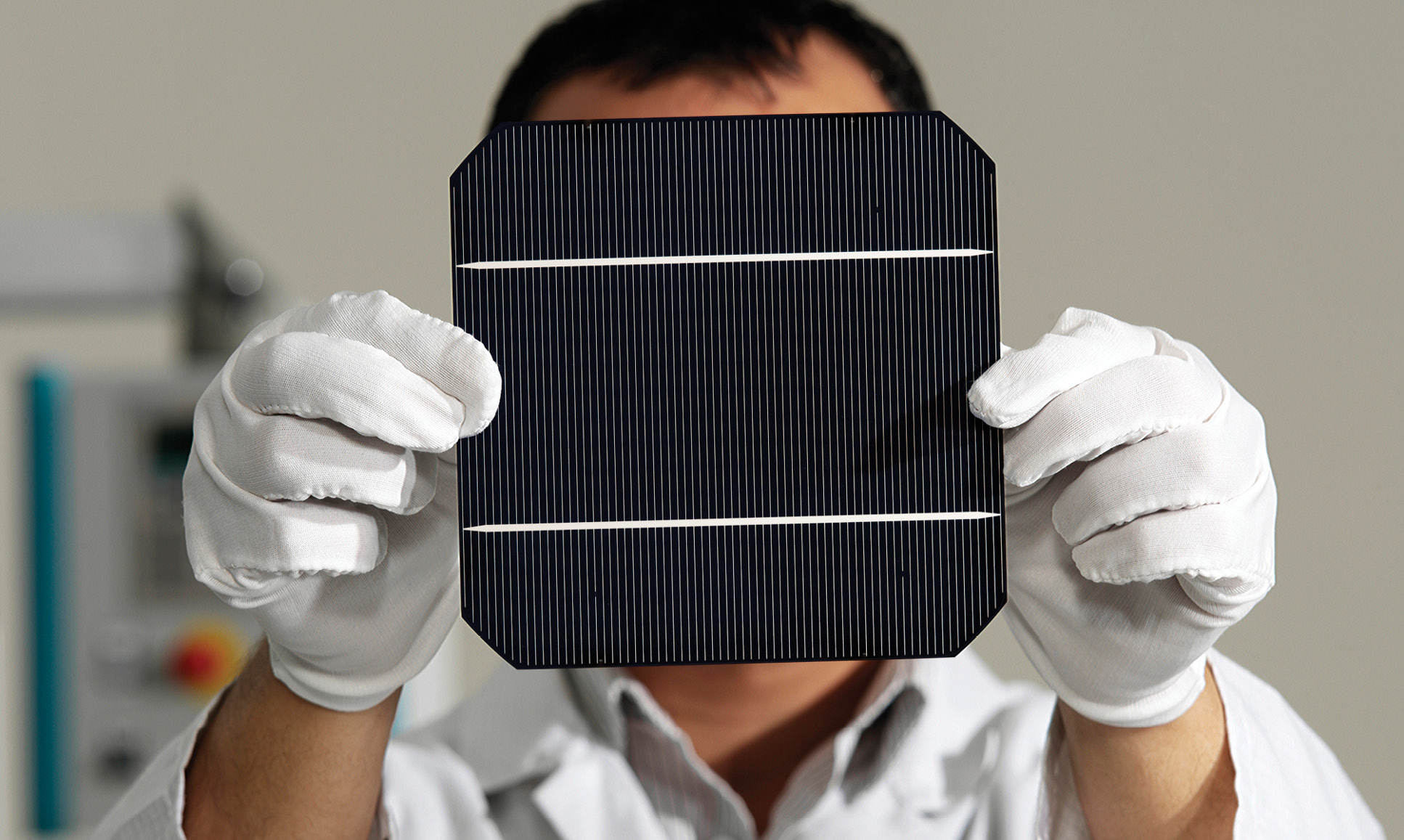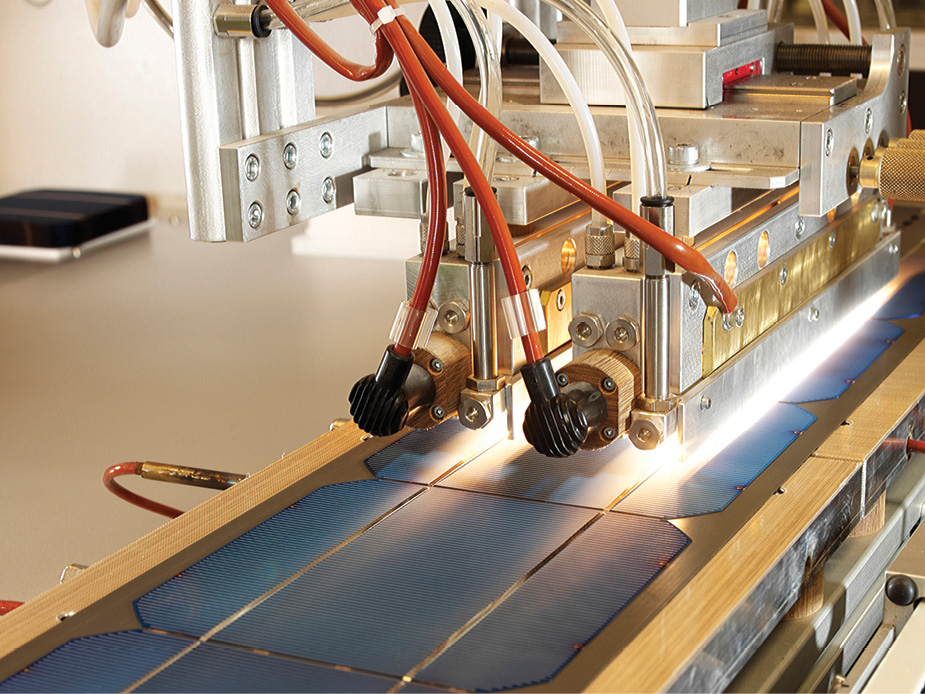

301 Moved Permanently
Solar energy is an essential part of the global move toward clean, renewable energy, and it is critical that the growing solar photovoltaic industry is itself truly safe and sustainable. Little attention is currently being paid to the potential risks and consequences of scaling up solar PV cell production. The solar PV industry must address these issues immediately, or risk repeating the mistakes made by the microelectronics industry.
Silicon-based solar PV production involves many of the same materials as the microelectronics industry and, therefore, presents many of the same hazards. Here is an overview of some of the hazards posed by crystalline silicon (c-Si) PV production technologies - the most common technology found in the solar sector.
Start with silicon
As with the production of silicon chips, production of c-Si wafers begins with the mining of silica, found in the environment as sand or quartz. Silica is refined at high temperatures to remove the oxygen and produce metallurgical grade silicon, which is approximately 99.6% pure. However, silicon for semiconductor use must be much purer.
Higher purities are achieved through a chemical process that exposes metallurgical grade silicon to hydrochloric acid and copper to produce trichlorosilane gas. The trichlorosilane is then distilled to remove remaining impurities, which typically include chlorinated metals of aluminum, iron and carbon. It is finally heated or “reduced” with hydrogen to produce silane gas. The silane gas is heated again to make molten silicon, used to grow monocrystalline silicon crystals or used as an input for amorphous silicon.
The next step is to produce crystals of either monocrystalline or policrystalline silicon. Monocrystalline silicon rods are pulled from molten silicon, cooled and suspended in a reactor at high temperature and high pressure. Silane gas is then introduced into the reactor to deposit additional silicon onto the rods until they “grow” to a specified diameter.


To produce multicrystalline silicon, molten silicon is poured into crucibles and cooled into blocks or ingots. Both processes produce silicon crystals that are extremely pure (from 99.99999% to 99.9999999%), which is ideal for microchips, but far more than required by the PV industry. The high temperatures required for c-Si production make it an extremely energy-intensive and expensive process, and also produces large amounts of waste. As much as 80% of the initial metallurgical grade silicon is lost in the process.
Sawing c-Si wafers creates a significant amount of waste silicon dust called kerf, and up to 50% of the material is lost in air and water used to rinse wafers. This process may generate silicon particulate matter that will pose inhalation problems for production workers and those who clean and maintain equipment. The U.S. Occupational Safety and Health Administration (OSHA) has set exposure limits to keep ambient dust levels low and recommends the use of respiratory masks. But it has been suggested that, despite the use of respiratory masks, workers remain overexposed to silicon dust.
The use of silane gas is the most significant hazard in the production of c-Si because it is extremely explosive and presents a potential danger to workers and communities. Accidental releases of silane have been known to spontaneously explode, and the semiconductor industry reports several silane incidents every year.
Step back
Further back in the silicon supply chain, the production of silane and trichlorosilane results in waste silicon tetrachloride, an extremely toxic substance that reacts violently with water, causes skin burns, and is a respiratory, skin and eye irritant. Although it is easily recovered and reused as an input for silane production, in places with little or no environmental regulation, silicon tetrachloride can constitute an extreme environmental hazard.
The extremely potent greenhouse gas sulfur hexafluoride is used to clean the reactors used in silicon production. The Intergovernmental Panel of Climate Change considers sulfur hexafluoride to be the most potent greenhouse gas per molecule; one ton of sulfur hexafluoride has a greenhouse effect equivalent to that of 25,000 tons of CO2. It can react with silicon to make silicon tetrafluoride and sulfur difluoride, or be reduced to tetrafluorosilane and sulfur dioxide. Sulfur dioxide releases can cause acid rain, so scrubbers are required to limit air emissions in facilities that use it.
It is imperative that a replacement for sulfur hexafluoride be found, because accidental or fugitive emissions will greatly undermine the reductions in greenhouse gas emissions gained by using solar power.
Other chemicals used in the production of crystalline silicon that require special handling and disposal procedures include the following:
- Large quantities of sodium hydroxide are used to remove the sawing damage on the silicon wafer surfaces. In some cases, potassium hydroxide is used instead. These caustic chemicals are dangerous to the eyes, lungs and skin.
- Corrosive chemicals like hydrochloric acid, sulfuric acid, nitric acid and hydrogen fluoride are used to remove impurities from and clean semiconductor materials.
- Toxic phosphine or arsine gas is used in the doping of the semiconductor material. Though these are used in small quantities, inadequate containment or accidental release poses occupational risks. Other chemicals used or produced in the doping process include phosphorous oxychloride, phosphorous trichloride, boron bromide and boron trichloride.
- Isopropyl alcohol is used to clean c-Si wafers. The surface of the wafer is oxidized to silicon dioxide to protect the solar cell.
- Lead is often used in solar PV electronic circuits for wiring, solder-coated copper strips, and some lead-based printing pastes.
- Small quantities of silver and aluminum are used to make the electrical contacts on the cell.
- Chemicals released in fugitive air emissions by known manufacturing facilities include trichloroethane, acetone, ammonia and isopropyl alcohol.
Monocrystalline production
Monocrystalline silicon (mono c-Si) is formed when the one single crystal cools into a cylinder (called a rod or ingot). Thin wafers are then cut from the cylinder.
Mono c-Si is produced in large quantities for the computer industry. Because the purity of silicon needed for solar PV is less than that required for silicon chips, the PV industry has historically relied on purchasing (at reduced cost) silicon wafers and polysilicon feedstock rejected by the chip makers. The production of solar grade silicon is growing as demand in the PV industry is outstripping the available computer industry castoffs.
In addition to the chemicals used by all crystalline silicon cell production, additional chemicals used to manufacture mono c-Si solar cells include ammonium fluoride, nitrogen, oxygen, phosphorous, phosphorous oxychloride and tin. Like most industrial chemicals, these materials require special handling and operating standards to prevent workplace hazards or exposure to toxics.
Multicrystalline production
To make multicrystalline silicon (multi c-Si) wafers, molten silicon is poured into crucibles under an inert atmosphere of argon gas and slowly cooled to form thin squares. These cells are typically less pure than mono c-Si - particularly around the edges, due to contact with the crucible during crystallization. They are less efficient but are also less expensive and less energy-intensive to make. Multi c-Si has a significant share of the c-Si market, at about 67% in 2004. Overall, the lifecycle impacts of mono c-Si and multi c-Si have a similar profile, although the energy used in production is higher for mono c-Si.
Other materials used or produced in the manufacturing of multi c-Si that require special handling and operating procedures include ammonia, copper catalyst, diborane, ethyl acetate, ethyl vinyl acetate, hydrogen, hydrogen peroxide, ion amine catalyst, nitrogen, silicon trioxide, stannic chloride, tantalum pentoxide, titanium and titanium dioxide.
New production practices are on the c-Si manufacturing horizon, and new technologies are being developed to significantly reduce energy consumption. Efforts are being made to make thinner wafers - microcrystalline Si and nanocrystalline Si - that use less silicon, but these require manufacturing techniques from nanotechnology that may pose new kinds of occupational risks. S
Process: Factory Environmental Management
Hazardous Materials Used In Silicon PV Cell Production: A Primer
By Dustin Mulvaney
Potent gases and other harmful materials present significant occupational risk in the factory.
si body si body i si body bi si body b
si depbio
- si bullets
si sh
si subhead
pullquote
si first graph
si sh no rule
si last graph